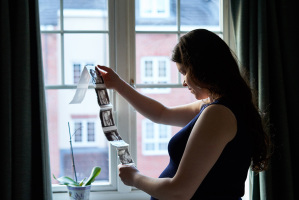Reflections on the road to Dobbs
![[PHOTO:MEDIUM]](https://assets.christianpost.com/images/cache/image/12/72/127295_w_400_208.png)
The past month has brought a flood of responses to the Supreme Court’s decision in Dobbs, overruling the untenable 1973 and 1992 abortion decisions. Some have called for a “summer of rage” to protest the rulings. Most alive today have not lived in a time when abortion was not a legal or common practice. Some take a reversion to potential protection of the unborn as almost a personal affront. Some claim their autonomy and life goals will be compromised or destroyed.
As someone who lived the first 20 years of his life in a nation where abortion was not a household word, and certainly not a maker of households, today’s rancor is hard to process. Liberal voices in the early 1970s were largely focused on the war in Vietnam. Young people reacted to the awful decade of the 1960s, when the nation was faced with the assassination of the Kennedys and Martin Luther King. Drugs and “free love,” flower children and nonviolence were dominant themes as the decade ended.
Abortion liberalization in this environment was still a bolt from the blue. I remember unfolding The Chicago Tribunein my early morning art history class at Notre Dame and reading the stark headline that the Supreme Court had struck down the laws of all 50 states — even the permissive ones — in favor of a regime of legal abortion until birth. It took the nation months to realize the scope of the change the Court had wrought, and how it had come to pass — with the author of the opinion, Harry Blackmun, retreating to the Mayo Clinic to compile his idiosyncratic account of legal and medical history.
It would not be until much later, when various Justices’ papers were released to public scrutiny, that scholars like Clarke Forsythe uncovered how the Court’s majority tossed around arbitrary deadlines for their inventive scheme of trimesters. More cases would follow, most of them either small victories for right to life advocates or sweeping defeats like the Casey and Hellerstedt rulings.
The largest victory came in 1980 when the Court by a margin of 5-4, and with the support of a strong amicus brief from Democratic leaders in the House of Representatives, upheld the Hyde Amendment.
That same year brought Ronald Reagan into office. He endorsed federal measures to protect the unborn, proclaiming that he saw no reason to treat human beings in the womb differently from any other human life — possessing and entitled to constitutional protection.
In his notable address to the National Association of Evangelicals in 1983 he said, “Human life legislation ending this tragedy will someday pass the Congress, and you and I must never rest until it does. Unless and until it can be proven that the unborn child is not a living entity, then its right to life, liberty, and the pursuit of happiness must be protected.”
Reagan’s eloquence was not rewarded and the early 1980s saw the defeat of pro-life measures in Congress. Ultimate defeat of the right to life was in prospect. A critical mass of the movement turned its energy to building pro-life pregnancy centers across the nation and ultimately around the world. The government puts its resources elsewhere for the most part, serving an agenda of population control in partnership with private financiers like Warren Buffett and Bill Gates. Until the mid-1990s when the partial-birth abortion issue revitalized a federal legislative agenda, the pro-life movement was unable to break open the iron grip of Harry Blackmun’s trimester scheme.
The low point was likely 2010, when the Democratic majority in Congress passed the Affordable Care Act and strong-armed a remnant of pro-life Democrats into backing its abortion-subsidizing provisions. To a veteran of the pro-life cause, the following decade, culminating in the Dobbs decision, seems like a miracle. How did it happen? I believe they were four factors.
First, the pro-life movement built a vast network of support for women and their unborn children with private, community-based funding.
Second, prenatal science exploded and is now properly cast as a revolution, where all indicators point to the personhood and “patienthood” — the ability to obtain and benefit from medical care — of the unborn.
Third, in a trend underplayed by the media but now explosively obvious, pro-life leadership in Congress and the states, while tilted toward one party, is populated by an increasing number of women and minority legislators. As this trend accelerates, the polarizing epithets of the progressive left ring evermore hollow.
Finally, the pro-life movement has prevailed in Dobbs because it proceeded in peace, endured resistance, offered rational arguments, and used every traditional lane of American civic life.
Today we rejoice in the ability to defend again the vulnerable unborn. But there is deep realism about the massive task ahead and no talk of triumph. Justice has been served. Ours will be a summer of service, not rage. But we have earned this victory, vindicating the best of this great nation.
Charles A. “Chuck” Donovan is president of Charlotte Lozier Institute.




























